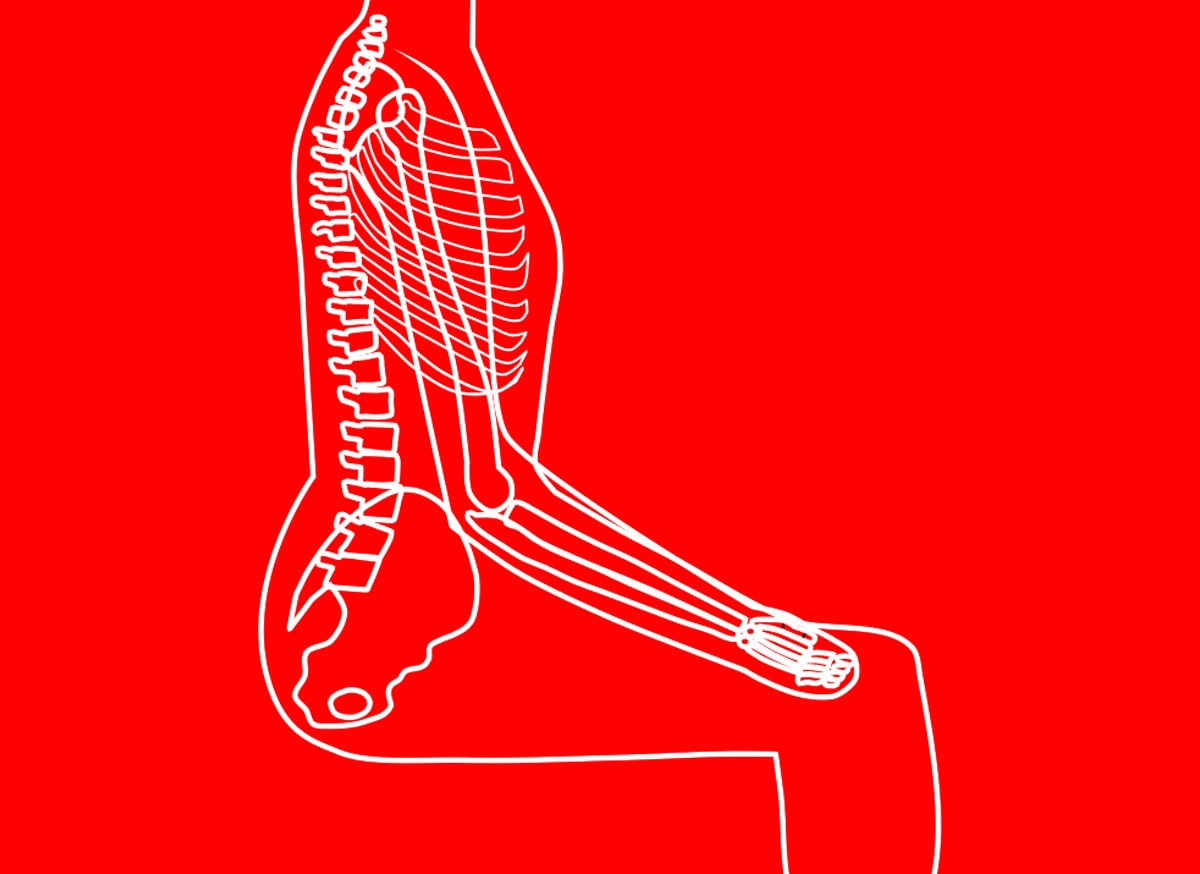I’m sometimes asked “How did you come up with the rocker for your chairs?” I usually deflect this question with something like “Well, it wasn’t the first thing I thought of…” and hope that’s enough explanation, because it’s a sort of meandering tale that stumbles from silly failure to ridiculous failure. It doesn’t show me in a good light, frankly. But, here’s an abbreviated version of the story.
Like most of America, I’d spent a great deal of time sitting. Although my job as a trauma surgeon kept me on my feet a lot (on rounds, in the OR, in clinic, in the OR, in the ER, …), unavoidably I also sat at a desk, and I found I just couldn’t get comfortable sitting. Worse, I was prey to occasional spells of intense back pain that could last a week or more. I tried the yoga ball, the kneeling chair, and a host of other solutions, but nothing seemed to help.
But, as a professor of surgery it’s an article of faith that if you understand a problem you can solve it. So, I read up a bit on back pain, sitting, posture, bodywork, anthropology, and the epidemiology of back pain. Eventually I came to understand that it was sitting, and particularly sitting in western chairs, that was the root cause of my back pain problems. Moreover, it was likely that western chairs were the source of most other people’s back pain problems as well. And then the penny dropped: Here was a problem worth solving.
I thought “How hard could it be to create a different sort of a chair, one that avoided the problems of conventional chairs?” As it turned out, pretty hard.
I started by buying a standing “wobble board’ and attaching it to a sitting stool with a piece of bungee cord; this worked … terribly. But it worked well enough that I spent almost a year trying to get to a version that did work. In retrospect, all my prototypes were pretty ridiculous and, unfortunately, I took some pictures along the way. The root problem was that using a hemisphere as the source of instability unavoidably created a “flat spot” where the bungee cord emerged; no matter what I tried, there simply wasn’t a work-around.
And then in an “ah-ha” moment I tumbled to the idea of using two cylinders rather than a single hemisphere. I made the first prototype from PVC drain pipe and although it looked silly, it worked surprisingly well. I then cycled through wooden versions (to dangerous to make by hand), 3D printed versions (too expensive), before settling on an injection molded version. Made from polycarbonate and manufactured accurate to 1 part in 10,000 these rockers are indestructible, attractive, affordable and geometrically perfect.
It was about this time that I wandered into “The Generator”, a maker space here in Burlington, Vermont where I had the great good fortune to meet Erik Cooper and Matt Flego. Together they are M//E Design, a team with skills (design, CAD programming, CNC routing, welding, robotics, …). Erik and Matt were immediately sold on the idea of a chair that would actually be good for people, and loved the simplicity of the rocker. And they especially loved the constraints I put on the project: our chairs had to not only move, but be so solid we could offer a lifetime guarantee, so attractive that people would want them, and so inexpensive that everyone could have one. As an epidemiologist I knew that it wasn’t enough that our new chair solve the problems caused sitting; it had to also be affordable if it was to solve the public health catastrophe brought on by conventional chairs.
Is it too much to say that conventional chairs are a public health emergency? Yes, but that’s a topic for another blog.
-Dr. Turner Osler
CONTACT





Leave a comment
All comments are moderated before being published.
This site is protected by hCaptcha and the hCaptcha Privacy Policy and Terms of Service apply.